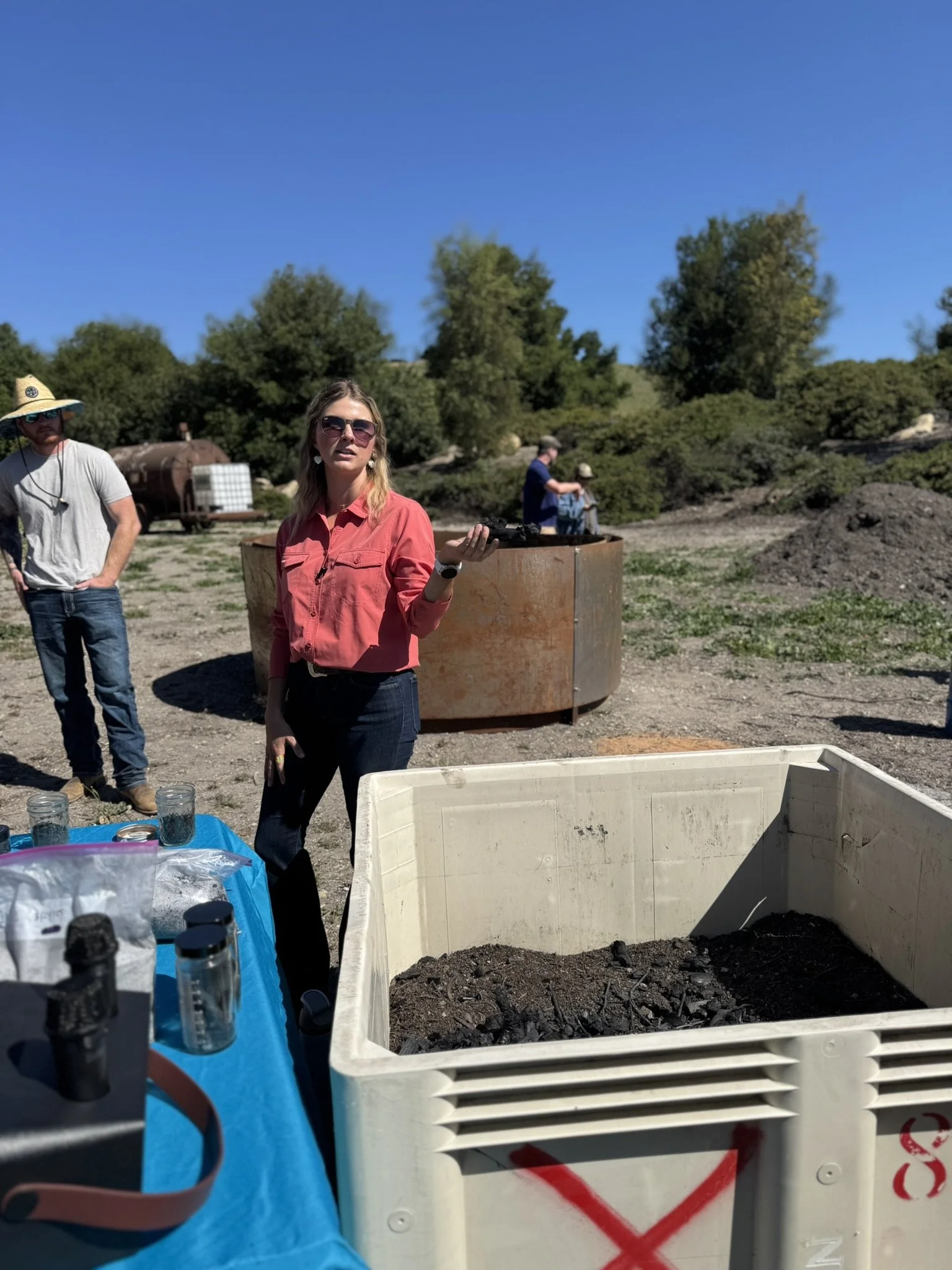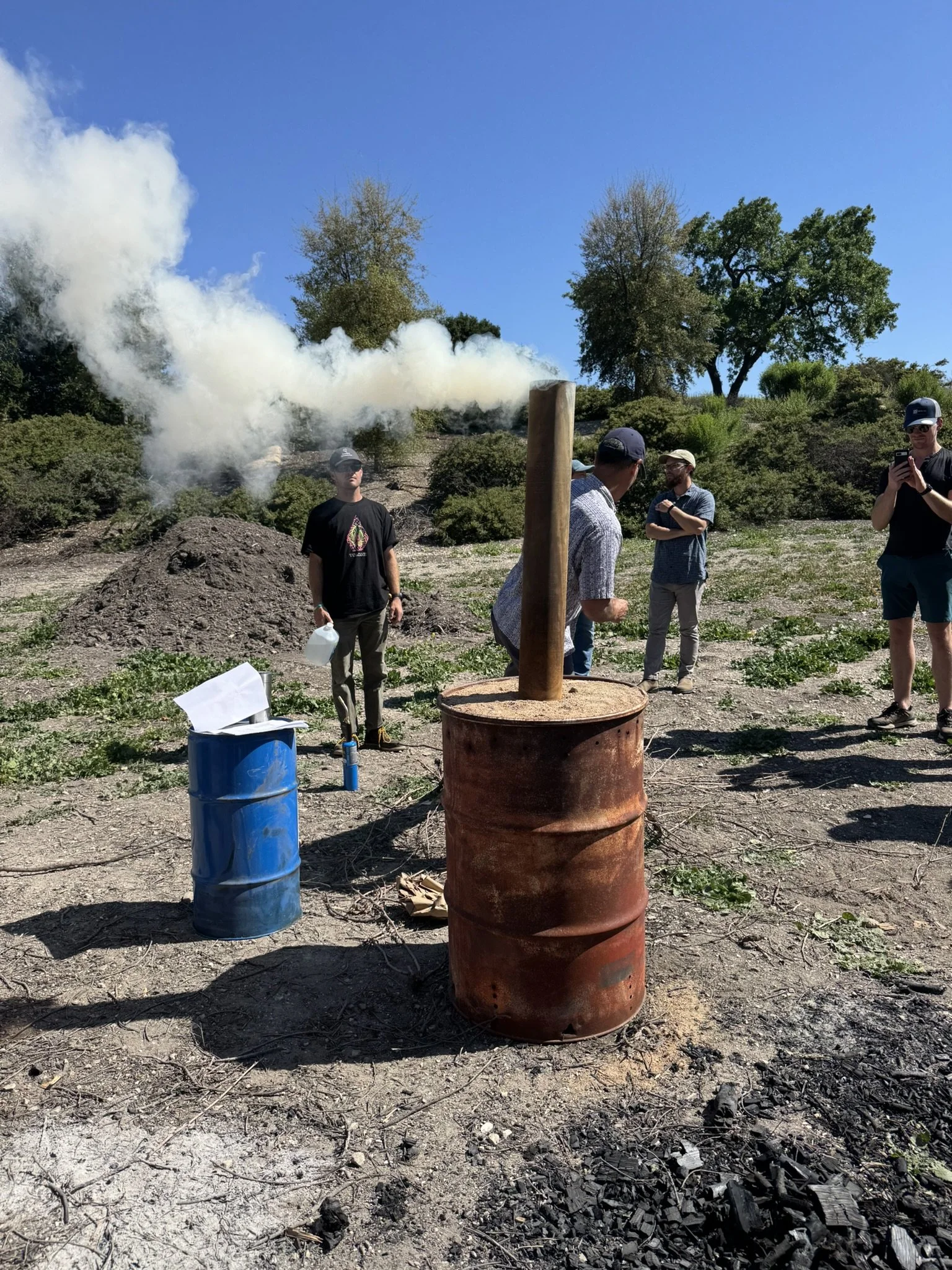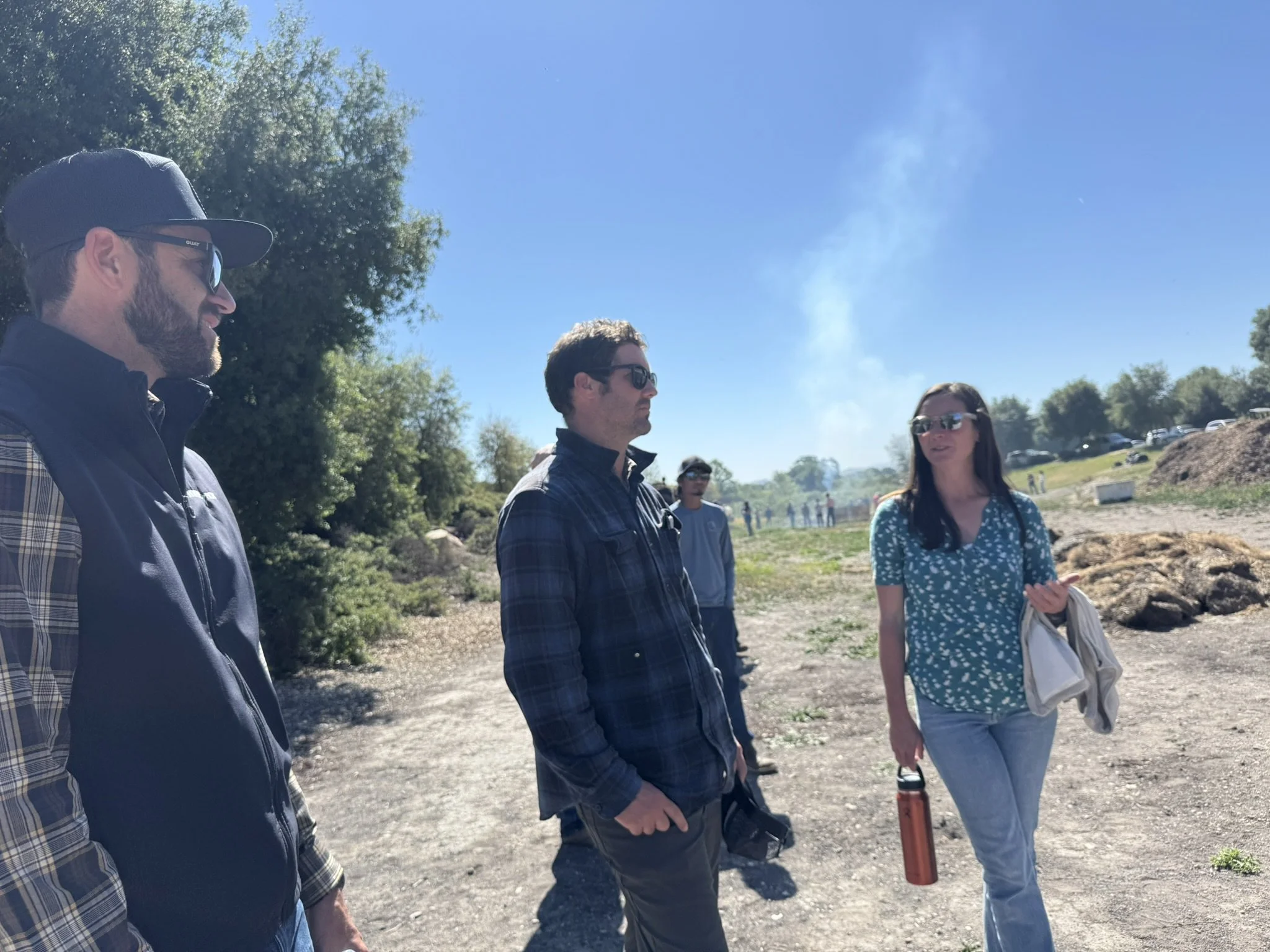Discovering Biochar: A Hands-On Introduction at Niner Wine Estates
At Measure to Improve, we’re always exploring practical, science-backed solutions that help our clients strengthen their sustainability programs. Biochar has been coming up more often, especially in conversations around soil health, waste reduction, and carbon sequestration. But it’s a topic that still feels unfamiliar or abstract to many.
That’s why we were excited to attend the Biochar Field Day at Niner Wine Estates. This event moved the conversation from concept to application, and provided a hands-on, accessible introduction to how biochar is produced, used, and evaluated.
Translating Biochar Science into On-Farm Application
Measure to Improve, was first introduced to biochar in 2023 during a site tour at the SITOS pilot project at ReGen Monterey, where Mayo Ryan and Jessica Bronner offered a detailed walkthrough of the production process. That experience sparked our interest. The field day at Niner Wine Estates helped deepen it and reinforce the potential for biochar to contribute to long-term soil strategies and broader sustainability initiatives.
The event was facilitated by Vineyard Team and co-hosted by Niner Wine Estates and Cal Poly. It featured a dynamic panel moderated by Craig Macmillan, Critical Resource Manager at Niner Wine Estates, with speakers representing a full spectrum of perspectives:
Jessica Bronner, SITOS Group
Dr. Charlotte Decock, Cal Poly
Jeff Lahar, Monterey Pacific
Pete Herder, Cal Poly Bioresource and Agricultural Engineering
Patrick Muran, Winemaker, Niner Wine Estates
The takeaway was clear: biochar can be a valuable tool. When integrated strategically, it can support soil health, reduce water use, and repurpose agricultural byproducts into something of lasting value.
It’s Not Charcoal, It’s Soil Infrastructure
One of the most memorable comparisons came from Jeff Lahar:
“Look at biochar as a coral reef for the microbiome.”
It’s not about immediate results, it’s about building a stronger foundation for soil health over time.
Following the panel, participants rotated through several hands-on demonstration stations:
A Cal Poly student-built pyrolysis unit, turning almond shells into biochar using low-oxygen heat
A tractor-mounted injector showing how biochar can be placed deep into the soil.
A biochar sample table comparing structure and quality.
A compost integration station highlighting how biochar is inoculated before use.
A vineyard walkthrough, sharing early trial results using biochar-amended compost
Each station broke down technical processes into accessible, real-world applications, which was truly appreciated.
What We Heard and Learned
The speakers brought diverse experience—from research and engineering to field trials and production. Their comments reinforced key takeaways about how biochar functions, why context matters, and how to integrate it effectively.
Jessica Bronner, SITOS Group, shared insights on production and value recovery:
“When you reduce the amount of oxygen that touches the feedstock, you get more of a pyrolyzation… Some of the biochar is up to 86% carbon.”
“We don’t like to call the almond shell waste. It’s a byproduct of the system. So we’re actually adding more value to the almond shell.”
Dr. Charlotte Decock, Cal Poly, emphasized the importance of patience and long-term monitoring:
“In the beginning, you won’t see much of an increase. It’s just the biochar that’s sitting there. But then after five, ten years, you might actually see your actual soil organic matter increasing.”
Jeff Lahar, Monterey Pacific, offered a strong visual analogy and stressed the importance of preparation:
“Look at biochar as a coral reef for the microbiome.”
“Biochar is inert. Everything we do—you have to inoculate it. We happen to inoculate with compost.”
Patrick Muran, Winemaker at Niner Wine Estates, spoke candidly about his initial skepticism and shift in perspective:
“I kept going, ‘Come on, I’ve got more important things to think about. What is this charcoal stuff?’”
“I built a hotel where all these organisms can live in this little piece here.”
In summary, biochar is promising, but it’s not a silver bullet. It needs to be applied with compost, applied in the right context, and evaluated over time. When integrated thoughtfully, it can convert agricultural byproducts into stable carbon, improve soil function, reduce water demand, and support microbial life.
Thank You, Partners and Presenters
Thank you to the partners and presenters who made this event possible:
Niner Wine Estates
Cal Poly
Vineyard Team
SITOS Group
Panelists: Jessica Bronner, Dr. Charlotte Decock, Jeff Lahar, Pete Herder, Patrick Muran
Moderator: Craig Macmillan
This was a very thoughtfully executed field day, reinforcing the value of collaborative learning and the importance of pairing science with hands-on application. We left with new knowledge, valuable connections, and a deeper appreciation for biochar’s role in advancing sustainable agriculture.







